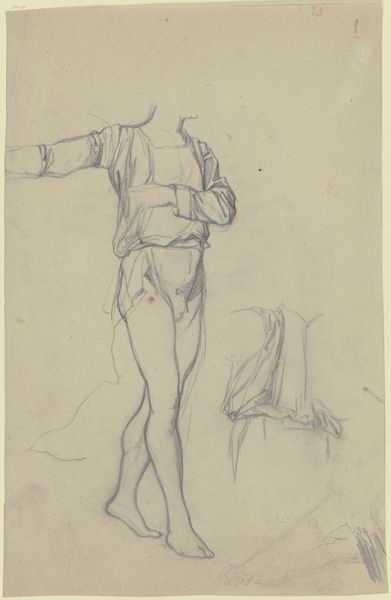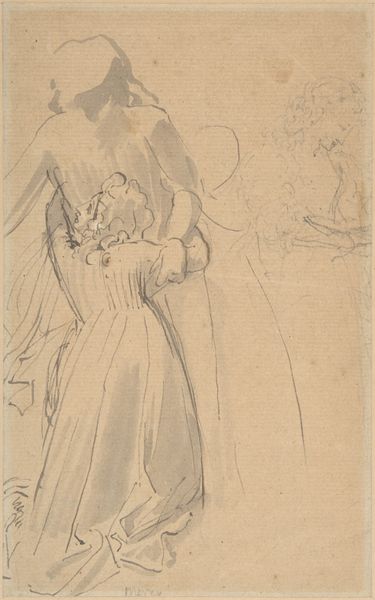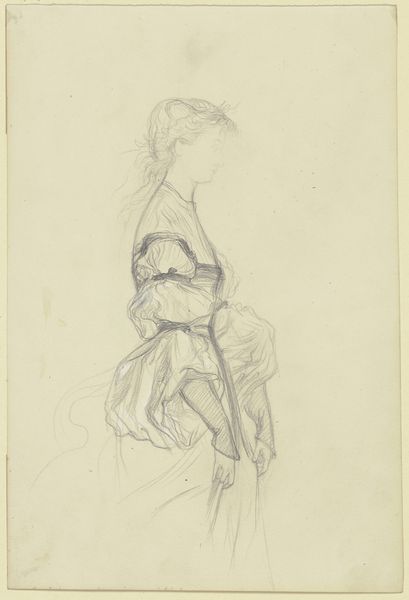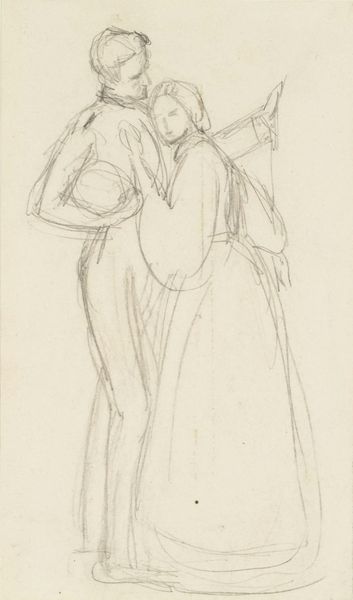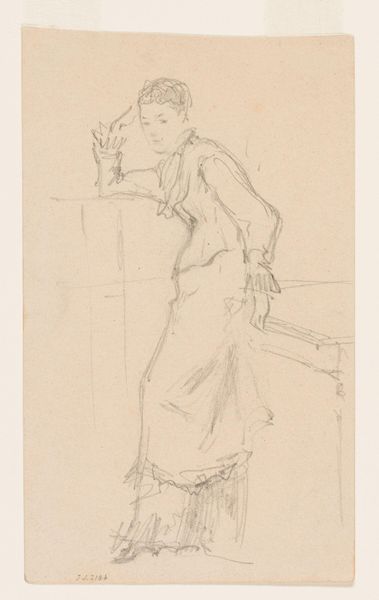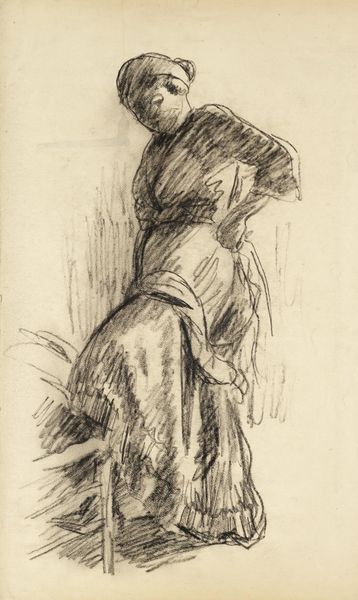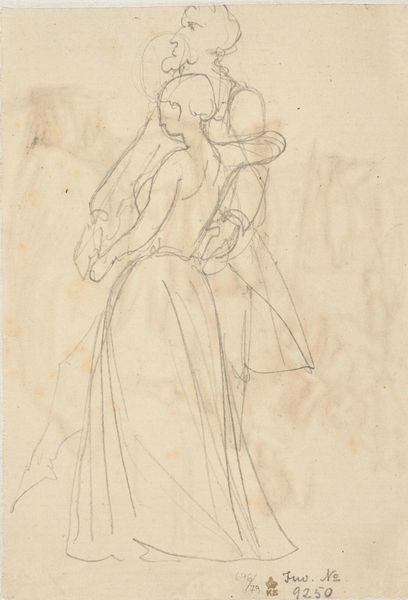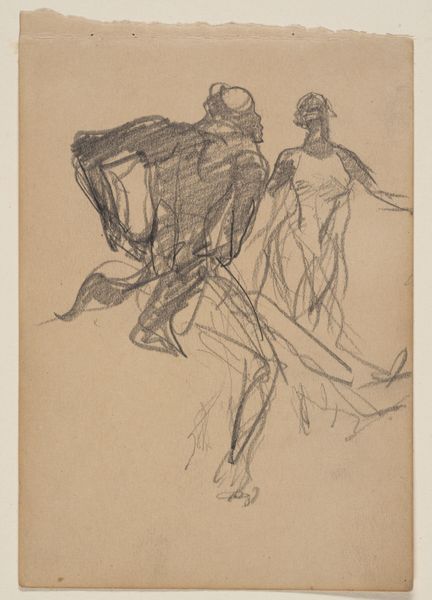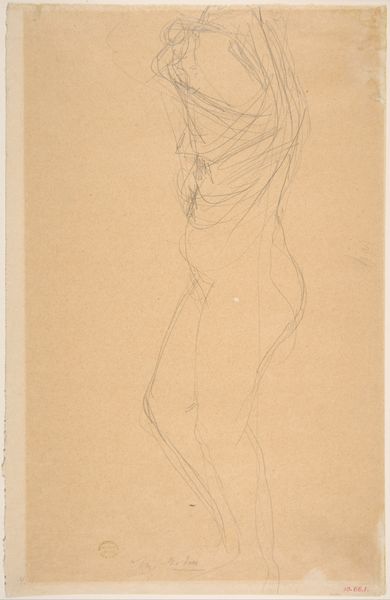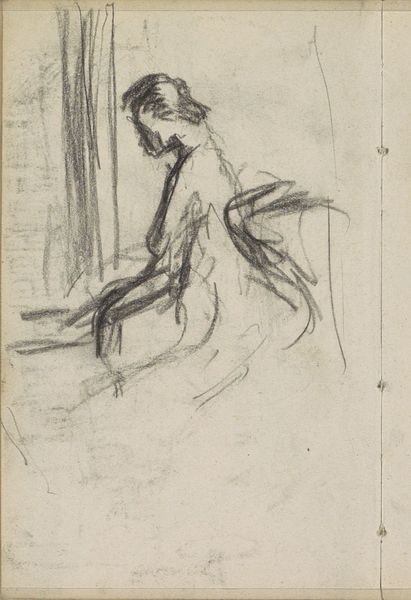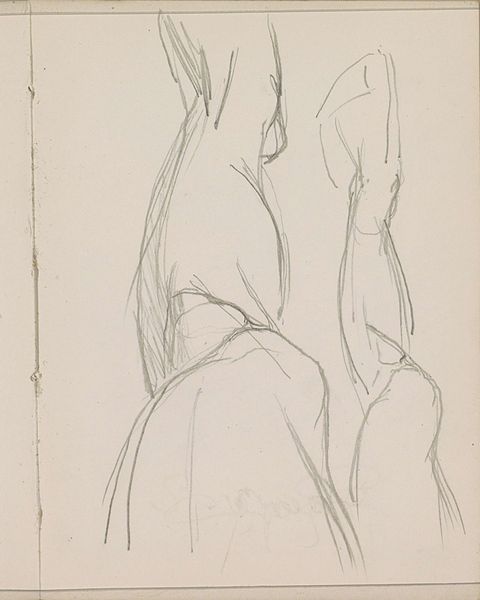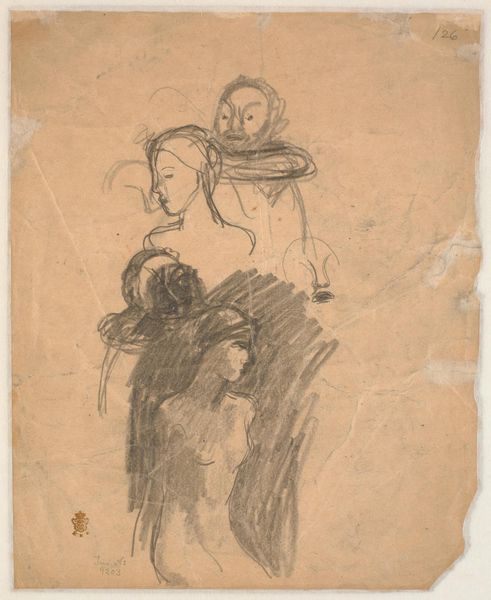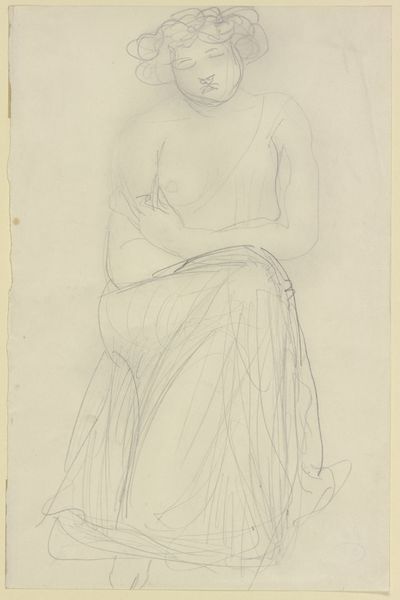
drawing, pencil
#
drawing
#
pen sketch
#
pencil
#
nude
Dimensions: 219 mm (height) x 175 mm (width) (bladmaal)
Editor: Here we have Karl Isakson's "Nøgen mandsskikkelse og gående kvinde i profil", created between 1904 and 1909 using pencil and pen. It's currently at the SMK in Copenhagen. I'm struck by the stark contrast between the angularity of the male figure and the soft curves depicting the woman. What do you make of this formal juxtaposition? Curator: The image presents an intriguing interplay of line and form. Observe how the artist employs varied pressure, modulating from thin, almost ephemeral lines to denser, darker marks. This manipulation contributes to a sense of depth and volume despite the sketch's overall spareness. What significance do you ascribe to the negative space surrounding the figures? Editor: Perhaps the emptiness emphasizes the isolation or disconnection between the figures? How does that void relate to the composition as a whole? Curator: Indeed. The use of negative space isolates each figure while simultaneously drawing them into dialogue on the page. It's through the interplay of positive and negative forms that the artist builds a compositional tension, a silent drama enacted solely through the language of line and form. Notice the differing styles in depicting the figures—the female rendered with significant shading versus the raw linework of the male figure. Is this a calculated juxtaposition, do you think? Editor: It feels intentional, almost like a study in contrasts—vulnerability against composed strength. The roughness of the sketch adds to the feeling of something raw and immediate. Curator: Precisely. The varying densities and distinct renderings produce a potent compositional dialectic, drawing the eye through a nuanced arrangement of form. Through careful inspection of these elements—the line, form, and space—the work transcends representational function. What have you discovered? Editor: I see the artistic intent now. It’s about contrasting shapes and drawing the viewer into an intriguing game of composition, less about depicting reality and more about…abstract relationships. Curator: Agreed. It reveals the potency inherent in fundamental aesthetic elements, inviting further considerations on their capacity to affect interpretation.
Comments
No comments
Be the first to comment and join the conversation on the ultimate creative platform.
